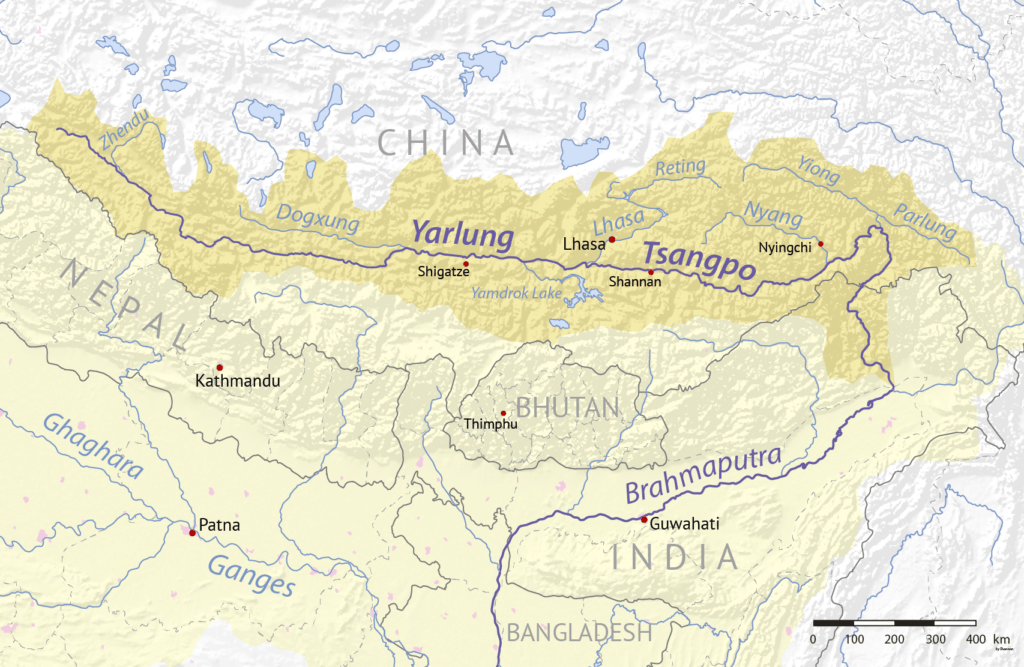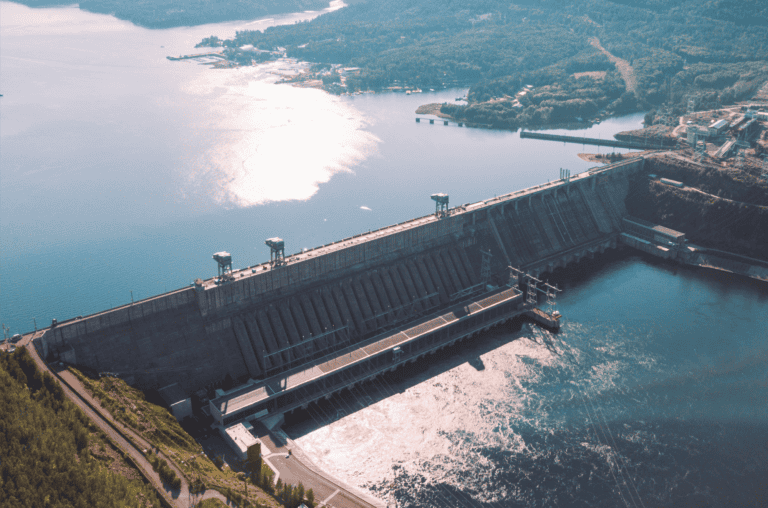The project
China recently announced its plan to build the world’s biggest hydroelectric dam on the Yarlung Tsangpo River, in the Tibetan Autonomous Region (TAR). China’s commitment is to reduce the use of fossil fuels and become carbon-neutral by 2060.
The plan is to build eleven hydropower stations on the river. These will generate 60 gigawatts of power, producing three times more hydroelectric power than China’s current largest dam, the Three Gorges. That project forced the relocation of more than 1.4 million people, one of the downsides of very large dam projects.
The Yarlung Tsangpo originates from melting glaciers and mountain springs. The river flows down the Himalayan watershed and supplies drinking water to an estimated 1.8 billion people in China, India and Bhutan. At one point, the river descends approximately 2,700 meters through the Yarlung Tsangpo, creating a huge gorge more than twice as deep as the Grand Canyon in the United States.
This new mega-dam project is receiving criticism from environmentalists as well as from Tibetan rights groups. Some residents in Medog County face the risk of relocation. In addition, experts hold fear on the impact of the changed river flow.
While this project in the Yarlung Tsangpo is the largest, it is not the only dam project along the river. Various small and medium-sized dams have already been built. It is noted that China’s 11 Mekong dams have disrupted fish life and the flow sediment has contributed directly to the collapse of river banks and the destruction of communities – a downside to be weighed against the benefits of a dam.
The Yarlung Tsangpo River flows from Tibet into India’s Arunachal Pradesh state and down through to Assam to Bangladesh. Indian authorities are concerned that the Chinese project could trigger flash floods and create water scarcity. Now India is considering building a 10 gigawatt dam in Arunachal Pradesh to mitigate the adverse impact of the Chinese Yarlung Tsangpo dam project.
Potentials Costs
This is an expensive endeavour, not only in terms of construction, but because dams, especially on this scale, tend to have a serious impact on local ecosystems and communities, impacts that cost much to mitigate.
The Tibetan Plateau is of huge importance for many major rivers and is one of the most significant ecosystems on the planet. The region of Yarlung Tsangpo Gorge is still very young geologically and is still an active formation. Therefore, the area is affected by many geological stresses and seismic activities, and landslides are relatively common.
In the 1950s, an earthquake of 8.0 magnitude shook the area, causing many landslides which resulted in flooding of parts of the region downstream.
In early 2000, another large landslide in Yi’ong caused the formation of a four billion cubic meter lake barrier. Shortly later, the barrier failed, resulting in floods that affected millions of people.
As average temperatures have been rising, the Himalayan glaciers and snowlines have been retreating at an alarming rate. These glaciers are the main source of fresh water for many rivers including the Yarlung Tsangpo that uses the mountain range as a source.
The gorge ecosystem could also be in trouble if the dams are built. The trees along the gorge are considered over-mature and the local peoples use slash and burn as agricultural farming methods, destroying large areas of trees to create farmland and accelerating soil erosion in the process. In turn, the area’s wildlife is fast becoming endangered and faces extinction. The extra pressure of a large dam will undoubtedly prove too much for these already fragile ecosystems.
The region in question is also of large geological importance. The 2.5 million square kilometers Tibetan Plateau is rich in resources and also borders many nations. The watershed of the Himilayas provides drinking water to close to 2 billion people. Any disturbance in this area can have serious consequences for those who rely on this water to survive.

References
McFadden, C 2021, China’s New Dam Project Could Dwarf the Three Gorges Dam, Interesting Engineering, viewed 1 March 2021, https://interestingengineering.com/chinas-new-dam-project-could-dwarf-the-three-gorges-dam
Lees, O 2021, China to build the world’s biggest dam on sacred Tibetan river, Aljazeera, viewed 1 March 2021, https://www.aljazeera.com/news/2021/2/8/china-to-build-the-worlds-biggest-dam-on-sacred-tibetan-river
Morrow, S 2021, China plans world’s biggest dam build on Tibetan river, AA, viewed 1 March 2021, https://www.aa.com.tr/en/economy/china-plans-world-s-biggest-dam-build-on-tibetan-river/2138902

























